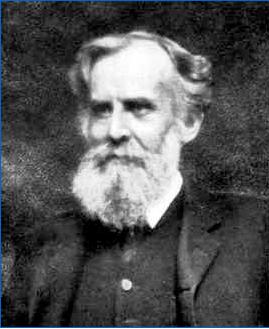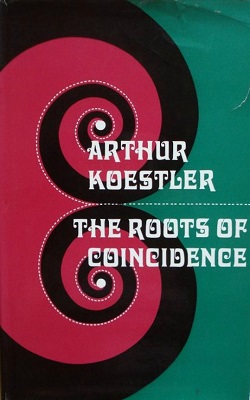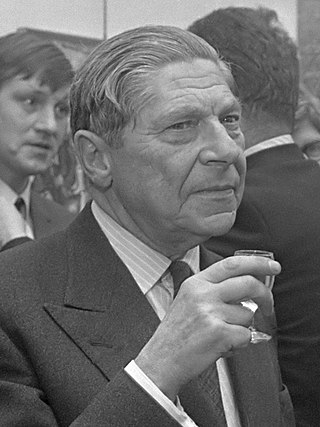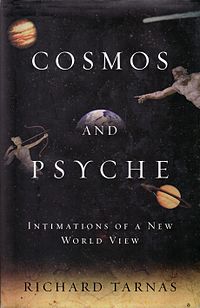
Frequentist probability or frequentism is an interpretation of probability; it defines an event's probability as the limit of its relative frequency in many trials. Probabilities can be found by a repeatable objective process. The continued use of frequentist methods in scientific inference, however, has been called into question.

The Pauli effect or Pauli's device corollary is the supposed tendency of technical equipment to encounter critical failure in the presence of certain people. The term was coined after mysterious anecdotal stories involving Austrian theoretical physicist Wolfgang Pauli, describing numerous instances in which demonstrations involving equipment suffered technical problems only when he was present.

Carl Gustav Jung was a Swiss psychiatrist and psychoanalyst who founded analytical psychology. He was a prolific author, illustrator and correspondent.
Synchronicity is a concept first introduced by analytical psychologist Carl G. Jung "to describe circumstances that appear meaningfully related yet lack a causal connection." In contemporary research, synchronicity experiences refer to one's subjective experience that coincidences between events in one's mind and the outside world may be causally unrelated to each other yet have some other unknown connection. Jung held that this was a healthy, even necessary, function of the human mind that can become harmful within psychosis.
Physical causality is a physical relationship between causes and effects. It is considered to be fundamental to all natural sciences and behavioural sciences, especially physics. Causality is also a topic studied from the perspectives of philosophy, statistics and logic. Causality means that an effect can not occur from a cause that is not in the back (past) light cone of that event. Similarly, a cause can not have an effect outside its front (future) light cone.
Indeterminism is the idea that events are not caused, or are not caused deterministically.

Libertarianism is one of the main philosophical positions related to the problems of free will and determinism which are part of the larger domain of metaphysics. In particular, libertarianism is an incompatibilist position which argues that free will is logically incompatible with a deterministic universe. Libertarianism states that since agents have free will, determinism must be false and vice versa.

Analytical psychology is a term coined by Carl Jung, a Swiss psychiatrist, to describe research into his new "empirical science" of the psyche. It was designed to distinguish it from Freud's psychoanalytic theories as their seven-year collaboration on psychoanalysis was drawing to an end between 1912 and 1913. The evolution of his science is contained in his monumental opus, the Collected Works, written over sixty years of his lifetime.
Littlewood's law states that a person can expect to experience events with odds of one in a million at the rate of about one per month. It was framed by British mathematician John Edensor Littlewood.

Paul Kammerer was an Austrian biologist who studied and advocated Lamarckism, the theory that organisms may pass to their offspring characteristics acquired in their lifetime, meaning variation would be directed towards creating adaptations.

Astrological compatibility (synastry) is the branch of the astrology, that is meant to show compatibility of romantic partners. A natal horoscope is a chart or map of the angles of the planets in the Solar System and their positions in the zodiac at the exact time of a person's birth. These angles represent the positive and negative relationships between the planets. These relationships describe the relationship between the two people under consideration. Compatibility between Zodiac signs is always approached within a particular branch of astrological tradition: Western astrology, Vedic astrology or Chinese astrology.
The law of truly large numbers, attributed to Persi Diaconis and Frederick Mosteller, states that with a large enough number of independent samples, any highly implausible result is likely to be observed. Because we never find it notable when likely events occur, we highlight unlikely events and notice them more. The law is often used to falsify different pseudo-scientific claims; as such, it is sometimes criticized by fringe scientists.

The Roots of Coincidence is a 1972 book by Arthur Koestler. It is an introduction to theories of parapsychology, including extrasensory perception and psychokinesis. Koestler postulates links between modern physics, their interaction with time and paranormal phenomena. It is influenced by Carl Jung's concept of synchronicity and the seriality of Paul Kammerer.

In the philosophy of mind, double-aspect theory is the view that the mental and the physical are two aspects of, or perspectives on, the same substance. It is also called dual-aspect monism, not to be confused with mind–body dualism. The theory's relationship to neutral monism is ill-defined,
Neutral monism and the dual-aspect theory share a central claim: there is an underlying reality that is neither mental nor physical. But that is where the agreement stops. Neutral monism has no room for the central feature of the dual-aspect theory: the mental and physical aspects, sides, or properties that characterize the underlying entities of dual-aspect theory. The neutral monist accepts the mental/physical distinction.

Arthur Koestler, was a Hungarian-born author and journalist. Koestler was born in Budapest and, apart from his early school years, was educated in Austria. In 1931, Koestler joined the Communist Party of Germany, but he resigned in 1938 after becoming disillusioned with Stalinism.

Cosmos and Psyche: Intimations of a New World View is a 2006 book by cultural historian Richard Tarnas, in which the author proposes the existence of relationships between planetary transits and events in the lives of major historical figures, as well as cultural events.
In philosophy, a grouped event is the experience of two or more events that occur in sequence or concurrently that can be subsequently categorized.

Synchronicity: An Acausal Connecting Principle, by Carl Gustav Jung, is a book published by Princeton University Press in 1960. It was extracted from Structure & Dynamics of the Psyche, which is volume 8 in The Collected Works of C. G. Jung. The book was also published in 1985 by Routledge.
Synchromysticism is the practice of attributing mystical or esoteric significance to coincidences. The word, a portmanteau of synchronicity and mysticism, was coined by Jake Kotze in August 2006. Synchromysticism has been described as a phenomenon "existing on the fringe of areas already considered fringe". Steven Sutcliff and Carole Cusack describe synchromysticism as "part artistic practice, part spiritual or metaphysical system, part conspiracy culture", while Jason Horsley describes it as "a form of postmodern animism" that "combines Jung's notion of meaningful coincidences with the quest for the divine, or self-actualization through experience of the divine."











